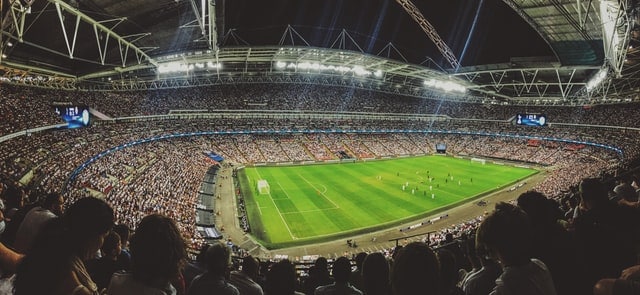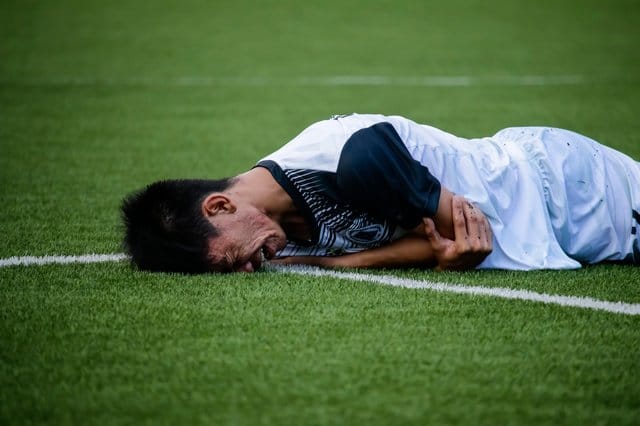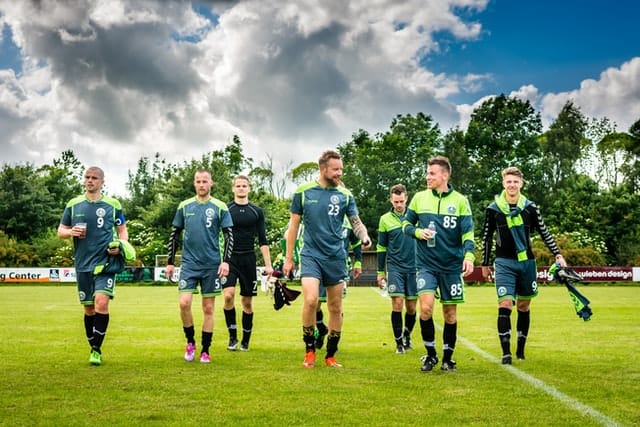As a new soccer fan, there will definitely come a day when you see a soccer player wearing a bra on their chest area and just wonder why a soccer player would want to wear a sports bra.
To clear out any confusion throughout the rest of the article, what you see soccer players wearing on their chests aren’t actually like the normal bras that women usually wear.
Instead, the sports bras that soccer players wear are actually vests that track the player’s performance while they are in action.
Male soccer players wear sports bras that contain GPS trackers and other small devices in order to track their performances and collect important data about their movement and their body activities. These bras track the total distance covered by the player, their acceleration, deceleration, heart rate and many other important stats about these players.
The bras contain a pocket at the back and this pocket is used to hold the devices needed to collect useful data about the player.
So in simple words, these bras that male soccer players wear are nothing but athletic vests that are used to track the player’s performance during training or during a soccer game.
When do soccer players use the sports bras?
Soccer players mostly use the soccer bras during training sessions and sometimes during soccer games.
If you watch the training sessions of your favorite soccer club, you will most probably notice that most of the players on the training field are wearing the bras that contain a GPS tracking device on their back.
You will also sometimes see the players wearing the sports bras under their team’s jersey during a soccer game. You’ll be able to see the sports bra when players take their shirt off after they score or at the end of a match when they exchange their jerseys with another player.
Are sports bras the only method used to track the players’ performances during a game?
While some soccer players got used to wearing GPS tracking bras to the point that they feel it’s part of their outfit, other soccer players prefer not to wear them during a match.
So in simple words, not all soccer players like to use soccer bras during a game, and there are other methods used to collect performance statistics about the players on the field.
For example, some soccer players wear the tracking devices in their shoes instead of using a sports bra to keep the device attached to their back.
However, the most common method used to measure the players’ performances during professional soccer matches is the real-time optical tracking system that uses image processing algorithms and other algorithms to measure the players performance on the field.
This system makes use of the cameras that are spread across all over the field, and then it analyses the images collected by these cameras frame by frame in order to be able to measure the players’ performances on the field.

While the data collected by this optical tracking system isn’t 100% accurate, it is usually good enough for most purposes.
However, since these optical tracking systems aren’t always available during training sessions and aren’t always available for soccer teams with low budgets, then the sports vests (bras) remain one of the most important ways to collect useful data about the players.
What type of data does the sports bra devices collect?
The following are some of the data that is collected by the devices held inside the bra that many professional soccer players wear.
- Total distance covered by the player
- The player’s heatmap during a game or a training session
- The player’s sprints counts
- The player’s acceleration and deceleration
- Sometimes the player’s heart rate (if the required accessories are embedded inside the bra)
- Other data
Why do players need to track their performances?
Alright, so we get why the soccer players wear bras during training and sometimes during soccer matches, but the real question is, what do they need the data for? Well, here’s your answer.
The data collected about the players using the sports bras can help these players improve their performances and avoid injuries. This data can also help coaches identify what players are doing their job correctly and what players need a little bit of improvement.
Data in the 21st century is a goldmine. Data tracking is found everywhere these days and the data collected is intended to improve a product or a person.
For example, this website that you are currently reading tracks the number of visitors per month to learn more about how to serve the readers better. Giant tech companies have massive databases that they use to improve their services and so on. You get the point. Collecting data is important and it helps improve things.
With that said, soccer is one of the sports that have decided to make use of modern technology by collecting data about the soccer players in order to improve their performances or lower their risks of injury.
If you’re not convinced yet, here is a list of the benefits of collecting data using the sports bras that soccer players wear (and other tracking technologies):
1- Compare the player’s stats with the expected stats of the position they play at.
The data that the sports bras GPS trackers collect can be used to determine whether a soccer player is performing worse or better than they are expected to perform.
For example, if a midfield player is running a distance that is less than the average running distance by other midfielders, then this player will learn that they need to improve their performance and push themselves harder during the upcoming matches.
2- Reduce the player’s injury risks.
The human body is phenomenal and can endure a lot of hard work and pressure. However, there are endurance limits that the human body may not be able to go beyond.

The data collected by the trackers can be used to predict the limits of the soccer players and this will help the players know when they need to relax a little bit and stop pushing themselves further which can reduce a lot of injury risks.
3- Help soccer coaches user better strategies and plans
The heatmap data for the soccer players can be extremely important to learn more about what’s working best for each soccer player on the field.
For example, a data scientist can check whether there is any correlation between the way soccer players are moving on the field during a soccer match, and the results of that match.
This kind of data analysis can let the coaches learn how each player on the field should move in order to maximize their chances of victory.
These types of data analysis would have not been possible without the trackers used inside the bras that soccer players wear, or without the other data collection devices used in soccer in general.
I’ll give you one last quick example before we move on to the last section of this article. A study has been recently made about the running performances of soccer players during the 2018 world cup.
This study aimed to see whether confederations had any effects on the running performances of soccer players. They used data collected by the optical tracking systems mentioned above in order to be able to do the research and the analysis.
The study found out that players from the Union of European Football Associations (UEFA) have performed better than players from some other associations around the world.
This data can be used by the national teams when they are picking which players should be part of their country’s team for example.
What I am trying to say here is that the data collected by the sports bras’ trackers and by the other tracking technologies are extremely important for soccer in general.
Should you use a sports bra yourself if you are a soccer player?
If you are really into soccer, and you like pushing yourself further all the time, then why not? Tracking your running distances and checking your heatmap during a game can help you keep pushing yourself harder and can help you learn your limits and avoid injuries.
SUMMARY
The bras that soccer players wear are actually vests that include GPS trackers that collect useful data about the player’s performance during a game or during a practice session.
The data collected is usually analyzed and then used to improve players’ performances, reduce their injury risks, and improve their strategies and plans during a soccer game.

